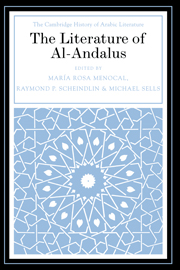Book contents
25 - The Sephardim
from PART V - MARRIAGES AND EXILES
Published online by Cambridge University Press: 28 May 2012
Summary
The descendants of Hispanic Jews exiled from Spain in 1492, who have retained their Spanish language and an awareness of their Iberian cultural heritage down to the present day, are, in a sense, the last representatives of the distinctive, multiethnic, trireligious society that developed and flourished in al-Andalus and later in Christian Spain during the Middle Ages. Their links to that culture and distant time can still be found in certain features of their modern heritage. Together with their continued use of the Spanish language, the religious poetry of the great masters of Golden Age Hebrew literature continues to echo, in Spanish translation, in the sacred verse of the Sephardim; the metrics of Sephardic didactic poetry and of oral lyric songs, in a number of instances, still faithfully reflect medieval Hispanic models; many Judeo-Spanish romances perpetuate, in both meter and subject matter, the verse and the narratives of medieval Castilian epics and their early balladic derivatives; and the Judeo-Spanish ballads still embody a few striking evocations of a medieval Hispanic trireligious society, whose memory has all but disappeared from similar oral poetry sung today on the Iberian Peninsula. On the following pages, I review the vernacular literature of the Sephardic Jews, stressing, wherever possible, the continuity between the Hispanic past and later literary and linguistic developments.
The Hispanic Jews who fled from al-Andalus to the Christian north after the Almoravid invasion (1091–1147) were probably bilingual, speaking both colloquial Hispano-Arabic and Mozarabic, the archaic Hispano-Romance dialect spoken throughout Muslim Spain during the early Middle Ages. Learned individuals were, of course, also conversant in Hebrew and in classical Arabic. During the early years of their residence in Christian territory, some Jews may perhaps have developed a distinctive form (or forms) of Jewish Spanish but, as Laura Minervini (Testi ) has eloquently shown, by the fifteenth century, Spanish Jews wrote and undoubtedly also spoke a language that was very similar, if not essentially identical, to that of their Christian neighbors.
- Type
- Chapter
- Information
- The Literature of Al-Andalus , pp. 455 - 471Publisher: Cambridge University PressPrint publication year: 2000
References
- 1
- Cited by



